
|
Now it is 7.4 mag (Nov. 18, Osamu Miyazaki). It will fade out rapidly after this. In the Northern Hemisphere, it will be unobservable in January. In the Southern Hemisphere, it stays observable in good condition.
Date(TT) R.A. (2000) Decl. Delta r Elong. m1 Best Time(A, h)
Nov. 18 20 59.69 -21 52.2 0.319 0.963 76 8.4 18:20 ( 17, 30)
Nov. 25 21 52.86 -33 33.9 0.538 1.016 77 9.7 18:18 ( 9, 21)
|

|
It is expected to brighten up to 7 mag, and it will be observable in good condition in winter. Now it is 9.6 mag (Nov. 20, Osamu Miyazaki). It will turn to fade out rapidly after brightening. In the Northern Hemisphere, it stays observable in good condition.
Date(TT) R.A. (2000) Decl. Delta r Elong. m1 Best Time(A, h)
Nov. 18 8 52.20 20 12.9 0.682 1.340 105 9.6 5:06 ( 0, 75)
Nov. 25 9 19.79 19 19.1 0.641 1.315 105 8.8 5:06 ( 0, 74)
|
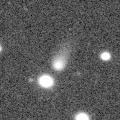
|
It is expected to brighten up to 7 mag in early 2024. Now it is 12.3 mag (Sept. 16, Jose G. S. Aguiar). Brightening gradually. It stays extremely low in the Northern Hemisphere. But it will become high in winter. It locates somewhat low in the Southern Hemisphere. But it will become high in winter. The brightness evolution slowed down since May.
Date(TT) R.A. (2000) Decl. Delta r Elong. m1 Best Time(A, h)
Nov. 18 12 17.54 -39 8.4 2.384 1.842 46 9.5 5:09 (323, 2)
Nov. 25 12 40.32 -39 40.0 2.305 1.776 46 9.3 5:14 (325, 3)
|
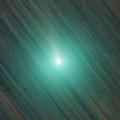
|
It approached to Earth down to 0.38 a.u., and brightened up to 8.0 mag in autumn (Sept. 29, Virgilio Gonano). Now it is 10.4 mag (Nov. 19, Osamu Miyazaki). It will fade out rapidly after this. It stays observable in good condition.
Date(TT) R.A. (2000) Decl. Delta r Elong. m1 Best Time(A, h)
Nov. 18 8 56.04 -3 42.3 0.528 1.176 96 10.0 5:09 (359, 51)
Nov. 25 9 1.95 -6 47.1 0.549 1.218 101 10.4 4:48 ( 0, 48)
|
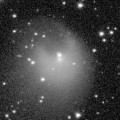
|
It returns for the first time in 70 years. It will brighten up to 4.5 mag in 2024 spring. It suddenly brightened in outburst by 5 mag up to 11.5 mag on July 20 (E. Tamas, Francois Kugel). It brightened again in another outburst up to 11.7 mag on Oct. 5 (Richard Miles). Another outburst occured on Nov. 14 (Nick James). Now it is 9.4 mag (Nov. 20, Osamu Miyazaki). It will brighten rapidly after this. In the Northern Hemisphere, it will be getting lower gradually. In the Southern Hemisphere, it is not observable now.
Date(TT) R.A. (2000) Decl. Delta r Elong. m1 Best Time(A, h)
Nov. 18 18 4.34 39 46.3 2.732 2.548 68 11.2 18:20 (115, 42)
Nov. 25 18 15.52 39 7.4 2.664 2.463 67 11.1 18:18 (115, 39)
|

|
Now it is 10.3 mag (Nov. 3, Hiroshi Abe). Fading gradually. In the Northern Hemisphere, it will be unobservable in January. In the Southern Hemisphere, it stays observable in good condition.
Date(TT) R.A. (2000) Decl. Delta r Elong. m1 Best Time(A, h)
Nov. 18 23 39.37 -43 6.1 2.800 3.101 98 11.2 19:51 ( 0, 12)
Nov. 25 23 31.07 -43 3.3 2.970 3.153 91 11.4 19:15 ( 0, 12)
|
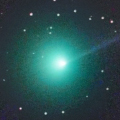
|
It brightened up to 8.1 mag in autumn (Oct. 10, Juan Jose Gonzalez). Fading rapidly. It will be fainter than 18 mag in January. It will never be observable after this.
Date(TT) R.A. (2000) Decl. Delta r Elong. m1 Best Time(A, h)
Nov. 18 16 11.96 -25 54.8 1.664 0.725 11 11.2 18:20 ( 67,-13)
Nov. 25 16 51.51 -27 25.2 1.777 0.850 13 12.4 18:18 ( 64,-12)
|

|
It brightened up to 8 mag from 2022 summer to 2023 spring. Now it is 11.5 mag (Nov. 20, Osamu Miyazaki). Fading slowly. It stays observable in good condition.
Date(TT) R.A. (2000) Decl. Delta r Elong. m1 Best Time(A, h)
Nov. 18 6 24.48 -7 28.6 3.521 4.221 129 12.3 2:39 ( 0, 47)
Nov. 25 6 17.50 -7 2.4 3.515 4.284 136 12.3 2:05 ( 0, 48)
|

|
It brightened up to 7.8 mag in late July (July 20, Thomas Lehmann). Now it is 12.9 mag (Oct. 3, Chris Wyatt). Fading slowly. Now it is not observable. It will appear in December.
Date(TT) R.A. (2000) Decl. Delta r Elong. m1 Best Time(A, h)
Nov. 18 15 8.55 -9 46.9 3.067 2.104 10 13.2 5:09 (276, -9)
Nov. 25 15 10.78 -9 16.2 3.097 2.168 16 13.3 5:14 (280, -2)
|

|
Now it is 13.7 mag (Nov. 15, Hiroshi Abe). It stays 14 mag for a while. It stays extremely low in the Northern Hemisphere. In the Southern Hemisphere, it stays observable in good condition.
Date(TT) R.A. (2000) Decl. Delta r Elong. m1 Best Time(A, h)
Nov. 18 10 43.11 -31 45.1 4.498 4.179 65 13.2 5:09 (336, 18)
Nov. 25 10 40.32 -33 27.8 4.431 4.210 70 13.2 5:14 (344, 19)
|
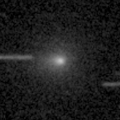
|
It brightened up to 12.6 mag in autumn (Oct. 3, Chris Wyatt). Now it is 13.7 mag (Nov. 2, Ken-ichi Kadota). It will fade out rapidly after this. It will be fainter than 18 mag in March. In the Northern Hemisphere, it stays observable in good condition. It locates somewhat low in the Southern Hemisphere.
Date(TT) R.A. (2000) Decl. Delta r Elong. m1 Best Time(A, h)
Nov. 18 19 48.51 -2 58.0 1.220 1.201 64 13.2 18:20 ( 48, 40)
Nov. 25 20 23.86 -1 59.2 1.257 1.256 66 13.5 18:18 ( 46, 43)
|
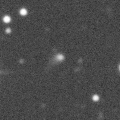
|
Now it is 13.9 mag (Nov. 14, Toshihiko Ikemura, Hirohisa Sato). Brightening slowly. It stays observable in good condition. It is expected to brighten up to 12 mag from 2024 to 2025.
Date(TT) R.A. (2000) Decl. Delta r Elong. m1 Best Time(A, h)
Nov. 18 9 41.33 6 32.6 4.422 4.526 89 13.6 5:09 (337, 59)
Nov. 25 9 39.17 7 11.8 4.256 4.491 97 13.5 5:14 (354, 62)
|
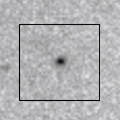
|
It is expected to brighten up to 8.5 mag from January to February. Now it is 15.4 mag (Nov. 12, Toshihiko Ikemura, Hirohisa Sato). Brightening rapidly. It stays observable in good condition. It is fainter than this ephemeris recently.
Date(TT) R.A. (2000) Decl. Delta r Elong. m1 Best Time(A, h)
Nov. 18 2 52.62 18 36.3 0.618 1.602 170 14.0 23:04 ( 0, 74)
Nov. 25 2 49.78 17 39.4 0.594 1.565 163 13.6 22:33 ( 0, 73)
|

|
Now it is 12.6 mag (Nov. 13, Taras Prystavski). In the Northern Hemisphere, it stays observable in good condition.
Date(TT) R.A. (2000) Decl. Delta r Elong. m1 Best Time(A, h)
Nov. 18 8 43.84 20 31.5 5.790 6.154 107 13.7 4:58 ( 0, 75)
Nov. 25 8 43.90 20 29.2 5.685 6.156 114 13.7 4:31 ( 0, 75)
|
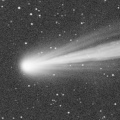
|
It approached to Sun down to 0.23 a.u. and brightened up to 2.5 mag in mid September (Sept. 18, Juan Jose Gonzalez). Now it is 11.1 mag (Nov. 7, Hidetaka Sato). Fading rapidly. It will be fainter than 18 mag in January. In the Northern Hemisphere, it is not observable now, but it will be observable soon. In the Southern Hemisphere, it will be getting higher gradually.
Date(TT) R.A. (2000) Decl. Delta r Elong. m1 Best Time(A, h)
Nov. 18 12 52.73 -37 55.6 2.145 1.513 39 13.7 5:09 (317, -2)
Nov. 25 12 50.32 -40 26.0 2.183 1.637 44 14.3 5:14 (324, 1)
|

|
It brightened up to 8.3 mag in 2021-2022 winter (Jan. 6, 2022, Toshiyuki Takahashi). Now it is 13.2 mag (July 14, Chris Wyatt). It stays 14 mag for a while. It stays extremely low in the Northern Hemisphere. In the Southern Hemisphere, it stays observable in good condition.
Date(TT) R.A. (2000) Decl. Delta r Elong. m1 Best Time(A, h)
Nov. 18 11 18.30 -43 30.4 7.221 6.745 57 14.0 5:09 (335, 5)
Nov. 25 11 21.34 -44 30.6 7.207 6.790 61 14.0 5:14 (340, 6)
|

|
Now it is 14.8 mag (Oct. 28, ATLAS Chile). Fading slowly. In the Northern Hemisphere, it is not observable now. In the Southern Hemisphere, it stays observable in good condition. It was expected to brighten up to 10 mag from spring to summer. However, it was fainter than originally expected.
Date(TT) R.A. (2000) Decl. Delta r Elong. m1 Best Time(A, h)
Nov. 18 11 50.34 -82 40.0 3.866 3.595 66 14.4 5:09 (354,-30)
Nov. 25 11 30.05 -84 8.8 3.895 3.630 67 14.4 5:14 (357,-30)
|
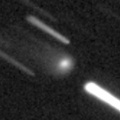
|
Now it is 14.9 mag (Sept. 18, Ken-ichi Kadota). Brightening slowly. Now it is not observable. It will appear in December. It is expected to brighten up to 12.5 mag in 2024 spring. At the high light, it will be observable in excellent condition in the Southern Hemisphere, but it will be low in the Northern Hemisphere.
Date(TT) R.A. (2000) Decl. Delta r Elong. m1 Best Time(A, h)
Nov. 18 15 19.58 -9 47.7 3.918 2.948 9 14.5 5:09 (275,-11)
Nov. 25 15 21.94 -11 2.1 3.872 2.919 13 14.4 5:14 (280, -5)
|
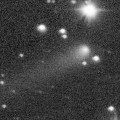
|
Now it is 14.7 mag (Nov. 1, Ken-ichi Kadota). Fading slowly. It will be getting lower gradually after this, and it will be unobservable in January in the Southern Hemisphere, or in February in the Northern Hemisphere. But it will be observable again in March in the Northern Hemisphere.
Date(TT) R.A. (2000) Decl. Delta r Elong. m1 Best Time(A, h)
Nov. 18 22 51.11 3 11.2 3.172 3.631 110 14.6 19:03 ( 0, 58)
Nov. 25 22 44.49 3 3.3 3.335 3.661 101 14.8 18:29 ( 0, 58)
|

|
Now it is 15.1 mag (Nov. 17, ATLAS Chile). It stays 14 mag for a while. It stays extremely low in the Northern Hemisphere. In the Southern Hemisphere, it stays observable in good condition.
Date(TT) R.A. (2000) Decl. Delta r Elong. m1 Best Time(A, h)
Nov. 18 11 39.61 -33 21.8 6.009 5.473 53 14.8 5:09 (326, 11)
Nov. 25 11 45.12 -33 59.8 5.920 5.451 57 14.7 5:14 (331, 14)
|

|
Now it is 14.2 mag (Nov. 15, Ken-ichi Kadota). It stays 15 mag for a while. In the Northern Hemisphere, it stays observable in good condition.
Date(TT) R.A. (2000) Decl. Delta r Elong. m1 Best Time(A, h)
Nov. 18 3 5.81 16 25.3 1.446 2.431 173 14.9 23:17 ( 0, 72)
Nov. 25 2 59.52 16 37.1 1.431 2.399 165 14.8 22:43 ( 0, 72)
|

|
The ATLAS search program detected its cometary activity in April. It continues to be brightening even after the perihelion passage. Now it is 14.2 mag (Nov. 3, Toshiyuki Takahashi). It will fade out rapidly after this. It will be fainter than 18 mag in February. In the Northern Hemisphere, it stays observable in good condition. In the Southern Hemisphere, it will be getting lower gradually.
Date(TT) R.A. (2000) Decl. Delta r Elong. m1 Best Time(A, h)
Nov. 18 23 34.15 -20 59.8 2.897 3.360 109 14.9 19:46 ( 0, 34)
Nov. 25 23 36.83 -19 51.8 3.025 3.401 103 15.1 19:21 ( 0, 35)
|

|
It will approach to Sun down to 0.4 a.u. in late September in 2024, and it is expected to brighten up to 0 mag. Now it is 15.3 mag (Sept. 10, A. Ivanov et al.). It will brighten rapidly after this. In the Northern Hemisphere, it will be getting higher gradually. In the Southern Hemisphere, it is not observable now, but it will appear in December. At the high light, in the Northern Hemisphere, it will be observable in good condition after the perihelion passage. In the Southern Hemisphere, it will be observable in the low sky before and after the perihelion passage.
Date(TT) R.A. (2000) Decl. Delta r Elong. m1 Best Time(A, h)
Nov. 18 14 38.30 -5 9.7 5.656 4.732 18 15.0 5:09 (277, 0)
Nov. 25 14 42.17 -5 34.8 5.540 4.656 24 14.9 5:14 (281, 6)
|
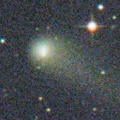
|
It brightened up to 11.1 mag in early 2022 (Mar. 31, 2022, F. Kugel, J.-G. Bosch, J. Nicolas). Now it is 14.3 mag (Nov. 3, Hiroshi Abe). It stays 15 mag for a while. In the Northern Hemisphere, it will be getting higher gradually. In the Southern Hemisphere, it is not observable now, but it will appear in February.
Date(TT) R.A. (2000) Decl. Delta r Elong. m1 Best Time(A, h)
Nov. 18 16 24.15 15 40.4 6.756 5.997 37 15.0 18:20 (101, 12)
Nov. 25 16 30.20 15 41.3 6.793 6.034 37 15.0 18:18 (103, 8)
|
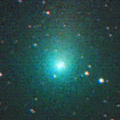
|
It brightened up to 9.5 mag from last winter to early spring (Jan. 30, Katsumi Yoshimoto). Now it is 14.9 mag (Nov. 13, Ken-ichi Kadota). Fading gradually. It will be fainter than 18 mag in March. It will be getting lower gradually after this, and it will be unobservable in February.
Date(TT) R.A. (2000) Decl. Delta r Elong. m1 Best Time(A, h)
Nov. 18 22 32.65 -10 53.6 3.361 3.675 100 15.1 18:45 ( 0, 44)
Nov. 25 22 33.02 -11 48.1 3.549 3.740 93 15.3 18:18 ( 0, 43)
|

|
Now it is 15.9 mag (Nov. 17, ATLAS Chile). Fading slowly. In the Northern Hemisphere, it will be getting higher gradually. In the Southern Hemisphere, it will be getting lower gradually after this, and it will be unobservable in March.
Date(TT) R.A. (2000) Decl. Delta r Elong. m1 Best Time(A, h)
Nov. 18 0 43.39 -39 51.3 1.225 1.812 109 15.4 20:55 ( 0, 16)
Nov. 25 0 38.90 -35 0.3 1.247 1.799 106 15.3 20:23 ( 0, 20)
|
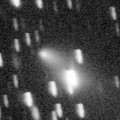
|
It brightened up to 13.6 mag in summer (July 16, Mitsunori Tsumura). Now it is 14.9 mag (Nov. 6, Thomas Lehmann). It will fade out rapidly after this. It will be fainter than 18 mag in February. In the Northern Hemisphere, it stays observable in good condition. In the Southern Hemisphere, it will never be observable after this.
Date(TT) R.A. (2000) Decl. Delta r Elong. m1 Best Time(A, h)
Nov. 18 23 23.19 69 2.1 1.594 2.232 117 15.4 19:34 (180, 56)
Nov. 25 23 16.47 68 2.6 1.662 2.277 116 15.7 19:00 (180, 57)
|

|
David Rankin detected its cometary activity in June. Now it is 15.7 mag (Nov. 13, Toshihiko Ikemura, Hirohisa Sato). Fading slowly. In the Northern Hemisphere, it stays observable in good condition. In the Southern Hemisphere, it will be getting lower gradually.
Date(TT) R.A. (2000) Decl. Delta r Elong. m1 Best Time(A, h)
Nov. 18 22 31.48 -2 47.2 1.688 2.145 103 15.6 18:44 ( 0, 52)
Nov. 25 22 40.15 -2 8.6 1.753 2.137 98 15.6 18:25 ( 0, 53)
|

|
It has not been observed yet in this apparition. It was expected to brighten rapidly up to 15 mag in summer. But actually, it is not detected, fainter than 18 mag (Oct. 14, Martin Masek). Fading slowly. It will be unobservable in January in the Southern Hemisphere, or in February in the Northern Hemisphere.
Date(TT) R.A. (2000) Decl. Delta r Elong. m1 Best Time(A, h)
Nov. 18 19 43.57 -19 58.2 2.296 1.981 59 15.7 18:20 ( 38, 25)
Nov. 25 19 59.43 -18 51.0 2.358 1.983 56 15.8 18:18 ( 40, 25)
|
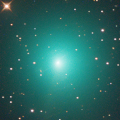
|
It brightened up to 8.4 mag in late July (July 22, Thomas Lehmann). Now it is 18.4 mag (Nov. 15, Toshihiko Ikemura, Hirohisa Sato). Fading rapidly. It will be fainter than 18 mag in January. It locates somewhat low in the Northern Hemisphere. In the Southern Hemisphere, it stays observable in good condition.
Date(TT) R.A. (2000) Decl. Delta r Elong. m1 Best Time(A, h)
Nov. 18 23 8.97 -25 4.4 1.879 2.306 102 15.8 19:21 ( 0, 30)
Nov. 25 23 16.63 -24 37.6 2.045 2.386 97 16.3 19:01 ( 0, 31)
|

|
Now it is 14.3 mag (July 7, Thomas Lehmann). It stays 16 mag for a while. In the Northern Hemisphere, it is not observable now, but it will appear in January. It locates somewhat low in the Southern Hemisphere. But it will become high in winter.
Date(TT) R.A. (2000) Decl. Delta r Elong. m1 Best Time(A, h)
Nov. 18 14 39.73 -49 0.6 3.885 3.088 31 15.9 5:09 (315,-24)
Nov. 25 14 53.44 -48 54.6 3.946 3.145 31 16.0 5:14 (316,-21)
|

|
Fading gradually. It will be fainter than 18 mag in January. In the Northern Hemisphere, it stays observable in good condition. It stays extremely low in the Southern Hemisphere.
Date(TT) R.A. (2000) Decl. Delta r Elong. m1 Best Time(A, h)
Nov. 18 18 52.35 -0 29.0 0.794 0.811 52 16.0 18:20 ( 63, 33)
Nov. 25 19 48.96 2 49.8 0.859 0.940 60 16.2 18:18 ( 59, 41)
|
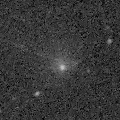
|
Very large comet. It is expected to brighten up to 13 mag in 2031. Now it is 16.4 mag (Nov. 13, ATLAS South Africa). It stays 16 mag for a while. In the Northern Hemisphere, it is not observable now. In the Southern Hemisphere, it stays observable in good condition. In the Northern Hemisphere, it is not observable until 2030.
Date(TT) R.A. (2000) Decl. Delta r Elong. m1 Best Time(A, h)
Nov. 18 3 11.45 -66 1.6 16.892 17.004 94 16.1 23:22 ( 0,-11)
Nov. 25 3 8.30 -66 3.7 16.903 16.980 92 16.0 22:51 ( 0,-11)
|
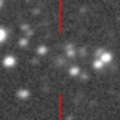
|
Now it is 17.3 mag (Nov. 11, ATLAS Chile). Fading slowly. It will be unobservable in January. But it will be observable again in March in the Southern Hemisphere.
Date(TT) R.A. (2000) Decl. Delta r Elong. m1 Best Time(A, h)
Nov. 18 19 34.44 -34 21.7 3.444 3.001 55 16.1 18:20 ( 32, 12)
Nov. 25 19 46.55 -34 8.6 3.528 3.013 51 16.2 18:18 ( 34, 11)
|

|
Now it is 16.2 mag (Nov. 15, Toshihiko Ikemura, Hirohisa Sato). It stays 16 mag for a while. In the Northern Hemisphere, it will be getting lower gradually after this, and it will be unobservable in March. In the Southern Hemisphere, it stays observable in good condition. The brightness evolution is slower than originally expected.
Date(TT) R.A. (2000) Decl. Delta r Elong. m1 Best Time(A, h)
Nov. 18 2 28.95 -23 27.9 2.926 3.691 134 16.2 22:39 ( 0, 31)
Nov. 25 2 20.06 -25 7.5 2.953 3.647 128 16.1 22:03 ( 0, 30)
|
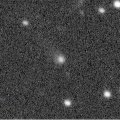
|
Now it is 16.8 mag (Nov. 11, ATLAS South Africa). It stays 16 mag for a while. In the Northern Hemisphere, it will be unobservable soon. In the Southern Hemisphere, it stays observable in good condition.
Date(TT) R.A. (2000) Decl. Delta r Elong. m1 Best Time(A, h)
Nov. 18 9 40.28 -52 29.9 3.887 3.730 73 16.2 5:09 (353, 2)
Nov. 25 9 37.17 -55 24.4 3.846 3.738 76 16.2 5:14 (359, 0)
|

|
It brightened up to 11.8 mag in summer (June 17, Osamu Miyazaki). Now it is 16.5 mag (Nov. 14, Toshihiko Ikemura, Hirohisa Sato). It will fade out rapidly after this. It will be fainter than 18 mag in January. In the Northern Hemisphere, it will be getting lower gradually. In the Southern Hemisphere, it will be getting lower gradually after this, and it will be unobservable in January.
Date(TT) R.A. (2000) Decl. Delta r Elong. m1 Best Time(A, h)
Nov. 18 20 51.88 -2 52.9 2.423 2.451 79 16.2 18:20 ( 29, 48)
Nov. 25 21 2.64 -2 35.7 2.533 2.480 75 16.4 18:18 ( 34, 47)
|

|
It approached to Earth down to 0.29 a.u. in early February, and it brightened up to 4.5 mag (Feb. 1, Juan Jose Gonzalez). Now it is 16.1 mag (Nov. 15, ATLAS Chile). Fading slowly. It will be fainter than 18 mag in March. In the Northern Hemisphere, it will never be observable after this. In the Southern Hemisphere, it stays observable in good condition.
Date(TT) R.A. (2000) Decl. Delta r Elong. m1 Best Time(A, h)
Nov. 18 5 17.50 -61 42.4 3.970 4.199 96 16.2 1:32 ( 0, -7)
Nov. 25 4 59.13 -62 28.9 4.050 4.270 96 16.3 0:46 ( 0, -7)
|

|
Now it is 16.3 mag (Nov. 17, ATLAS Chile). Fading slowly. It will be unobservable in January. But it will be observable again in February.
Date(TT) R.A. (2000) Decl. Delta r Elong. m1 Best Time(A, h)
Nov. 18 0 48.23 -31 22.9 0.617 1.377 116 16.3 20:54 ( 0, 23)
Nov. 25 23 38.86 -36 45.4 0.733 1.289 95 16.4 19:20 ( 0, 18)
|
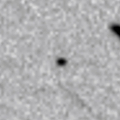
|
It will approach to Earth down to 0.2 a.u. from February to March, and it is expected to brighten up to 13 mag. Now it is 18.1 mag (Nov. 13, Toshihiko Ikemura, Hirohisa Sato). It will brighten rapidly after this. It stays observable in good condition.
Date(TT) R.A. (2000) Decl. Delta r Elong. m1 Best Time(A, h)
Nov. 18 23 54.06 -6 38.8 0.653 1.437 120 16.6 20:06 ( 0, 48)
Nov. 25 23 52.12 -8 27.9 0.641 1.367 112 16.4 19:36 ( 0, 47)
|

|
Now it is 15.4 mag (Nov. 13, ATLAS Chile). Fading slowly. In the Northern Hemisphere, it stays observable in good condition. In the Southern Hemisphere, it will be getting lower gradually after this, and it will be unobservable in March.
Date(TT) R.A. (2000) Decl. Delta r Elong. m1 Best Time(A, h)
Nov. 18 0 3.82 -8 6.9 3.167 3.787 122 16.5 20:16 ( 0, 47)
Nov. 25 0 3.66 -7 45.9 3.274 3.803 115 16.6 19:48 ( 0, 47)
|
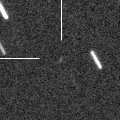
|
It is expected to brighten up to 16 mag in winter. Now it is 17.7 mag (Nov. 14, Toshihiko Ikemura, Hirohisa Sato). It stays 17 mag for a while. In the Northern Hemisphere, it stays observable in good condition. In the Southern Hemisphere, it will be getting higher gradually. It is fainter than this ephemeris recently.
Date(TT) R.A. (2000) Decl. Delta r Elong. m1 Best Time(A, h)
Nov. 18 11 54.92 3 53.6 2.422 2.072 57 16.6 5:09 (296, 38)
Nov. 25 11 53.86 1 4.5 2.316 2.081 63 16.5 5:14 (307, 42)
|

|
Now it is 16.0 mag (Nov. 14, Toshihiko Ikemura, Hirohisa Sato). It stays 17 mag for a while. It stays observable in good condition.
Date(TT) R.A. (2000) Decl. Delta r Elong. m1 Best Time(A, h)
Nov. 18 4 50.61 -12 47.0 6.438 7.249 142 16.6 1:05 ( 0, 42)
Nov. 25 4 48.11 -12 48.8 6.390 7.217 144 16.6 0:35 ( 0, 42)
|
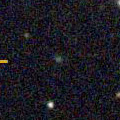
|
Now it is 16.8 mag (Nov. 4, ATLAS-HKO, Haleakala). It stays 17 mag for a while. In the Northern Hemisphere, it stays observable in good condition. It stays extremely low in the Southern Hemisphere.
Date(TT) R.A. (2000) Decl. Delta r Elong. m1 Best Time(A, h)
Nov. 18 4 54.63 41 35.6 5.812 6.696 151 16.7 1:10 (180, 83)
Nov. 25 4 51.82 41 42.6 5.779 6.694 156 16.7 0:40 (180, 83)
|

|
It brightened up to 14.1 mag in 2022 spring (Mar. 22, 2022, Chris Wyatt). Now it is 16.0 mag (Nov. 16, ATLAS Chile). Fading slowly. In the Northern Hemisphere, it stays observable in good condition. In the Southern Hemisphere, it will be getting lower gradually after this, and it will be unobservable in March.
Date(TT) R.A. (2000) Decl. Delta r Elong. m1 Best Time(A, h)
Nov. 18 1 42.79 -1 53.4 4.796 5.645 146 16.7 21:54 ( 0, 53)
Nov. 25 1 37.12 -1 35.3 4.915 5.693 138 16.7 21:21 ( 0, 54)
|
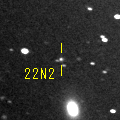
|
It is expected to brighten up to 11.5 mag in 2025 autumn, and it will be observable in good condition. Now it is 17.1 mag (Nov. 14, ATLAS Chile). It stays 16 mag for a while. It will be getting lower gradually after this, and it will be unobservable in January. But it will be observable again in March in the Southern Hemisphere.
Date(TT) R.A. (2000) Decl. Delta r Elong. m1 Best Time(A, h)
Nov. 18 20 40.85 -18 39.8 6.656 6.431 72 16.7 18:20 ( 25, 33)
Nov. 25 20 43.91 -18 25.2 6.720 6.389 66 16.7 18:18 ( 31, 31)
|

|
Very far object. Now it is 17.1 mag (Nov. 11, ATLAS South Africa). It stays 17 mag for a while. In the Northern Hemisphere, it is not observable now. In the Southern Hemisphere, it stays observable in good condition.
Date(TT) R.A. (2000) Decl. Delta r Elong. m1 Best Time(A, h)
Nov. 18 4 3.64 -77 26.0 10.379 10.313 83 16.8 0:17 ( 0,-22)
Nov. 25 3 46.48 -77 20.9 10.403 10.313 82 16.8 23:27 ( 0,-22)
|
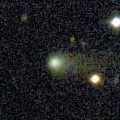
|
It brightened up to 13.9 mag in early 2023 (Jan. 21, Hidenori Nohara). Now it is 16.3 mag (June 17, Ken-ichi Kadota). It stays 17 mag for a while. In the Northern Hemisphere, it will be getting higher gradually. In the Southern Hemisphere, it is not observable now, but it will appear in December.
Date(TT) R.A. (2000) Decl. Delta r Elong. m1 Best Time(A, h)
Nov. 18 13 39.05 7 48.3 4.976 4.247 38 16.8 5:09 (275, 20)
Nov. 25 13 46.56 7 23.9 4.951 4.284 43 16.8 5:14 (279, 25)
|

|
Now it is 17.3 mag (Nov. 15, A. Diepvens). It stays 17 mag for a while. In the Northern Hemisphere, it stays observable in good condition. It locates somewhat low in the Southern Hemisphere. But it will become high in autumn.
Date(TT) R.A. (2000) Decl. Delta r Elong. m1 Best Time(A, h)
Nov. 18 5 1.49 37 42.6 4.315 5.214 152 16.9 1:17 (180, 87)
Nov. 25 4 58.10 37 15.7 4.260 5.194 159 16.9 0:46 (180, 88)
|
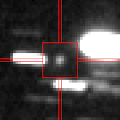
|
It is expected to brighten up to 12.5 mag in 2024 summer. Now it is 17.3 mag (July 28, ATLAS South Africa). Brightening slowly. In the Northern Hemisphere, it is not observable now. In the Southern Hemisphere, it will be getting higher gradually. Around the high light, it is observable in good condition in the Southern Hemisphere, but it locates very low in the Northern Hemisphere.
Date(TT) R.A. (2000) Decl. Delta r Elong. m1 Best Time(A, h)
Nov. 18 13 3.99 -51 29.3 5.128 4.461 43 17.0 5:09 (326,-12)
Nov. 25 13 14.73 -52 37.1 5.047 4.406 45 17.0 5:14 (329,-11)
|

|
Now it is 16.1 mag (Nov. 14, Toshihiko Ikemura, Hirohisa Sato). Fading slowly. It will be fainter than 18 mag in January. It stays observable in good condition.
Date(TT) R.A. (2000) Decl. Delta r Elong. m1 Best Time(A, h)
Nov. 18 3 37.82 4 19.4 2.177 3.143 165 17.1 23:49 ( 0, 59)
Nov. 25 3 33.04 4 8.6 2.202 3.157 162 17.2 23:16 ( 0, 59)
|

|
It returned for the first time in 68 years. It will brighten up to 7.5 mag in 2024 summer. Now it is 17.5 mag (Nov. 14, ATLAS Chile). It will brighten rapidly after this. It stays observable in good condition. At the high light, it locates low in the Northern Hemisphere, or it is not observable in the Southern Hemisphere.
Date(TT) R.A. (2000) Decl. Delta r Elong. m1 Best Time(A, h)
Nov. 18 3 53.92 -21 22.5 2.359 3.174 139 17.4 0:09 ( 0, 34)
Nov. 25 3 45.30 -21 9.6 2.297 3.102 138 17.1 23:28 ( 0, 34)
|
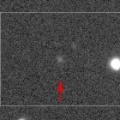
|
It will be observable at 15-16 mag from 2024 to 2025. Now it is 17.9 mag (Apr. 25, A. Diepvens). Brightening slowly. In the Northern Hemisphere, it stays observable in good condition. In the Southern Hemisphere, it will be getting higher gradually.
Date(TT) R.A. (2000) Decl. Delta r Elong. m1 Best Time(A, h)
Nov. 18 12 29.36 4 58.9 4.412 3.862 50 17.3 5:09 (289, 32)
Nov. 25 12 35.98 4 22.4 4.312 3.847 55 17.2 5:14 (294, 37)
|

|
Now it is 16.7 mag (Nov. 13, Jean-Claude Merlin). It stays 17 mag for a while. It stays extremely low in the Northern Hemisphere. In the Southern Hemisphere, it stays observable in good condition.
Date(TT) R.A. (2000) Decl. Delta r Elong. m1 Best Time(A, h)
Nov. 18 5 9.13 -40 47.6 7.358 7.841 115 17.2 1:24 ( 0, 14)
Nov. 25 5 6.63 -40 59.6 7.326 7.817 116 17.2 0:54 ( 0, 14)
|
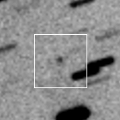
|
Now it is 16.9 mag (Nov. 12, ATLAS-HKO, Haleakala). It stays 18 mag for a while. In the Northern Hemisphere, it stays observable in good condition. In the Southern Hemisphere, it will be unobservable in December.
Date(TT) R.A. (2000) Decl. Delta r Elong. m1 Best Time(A, h)
Nov. 18 23 8.73 51 17.3 3.759 4.338 119 17.2 19:20 (180, 74)
Nov. 25 22 58.31 49 26.4 3.816 4.324 114 17.3 18:42 (180, 76)
|

|
Now it is 16.8 mag (Nov. 7, ATLAS Chile). Fading slowly. It will be fainter than 18 mag in January. It will be getting lower gradually. It was very faint as 21.5 mag in 2021. It seems to be bright temporarily in outburst.
Date(TT) R.A. (2000) Decl. Delta r Elong. m1 Best Time(A, h)
Nov. 18 21 17.45 -11 17.3 4.674 4.662 83 17.3 18:20 ( 17, 42)
Nov. 25 21 21.30 -11 0.4 4.795 4.676 77 17.4 18:18 ( 24, 41)
|

|
First return of a new periodic comet which brightened up to 10 mag in 2001. It is expected to brighten up to 12-13 mag from February to March in 2024. It will brighten rapidly after this. In the Northern Hemisphere, it will be getting higher gradually. In the Southern Hemisphere, it will be getting lower gradually after this, and it will be unobservable in January.
Date(TT) R.A. (2000) Decl. Delta r Elong. m1 Best Time(A, h)
Nov. 18 23 17.52 -32 9.0 1.470 1.918 100 17.7 19:29 ( 0, 23)
Nov. 25 23 11.63 -27 50.9 1.492 1.862 95 17.6 18:56 ( 0, 28)
|
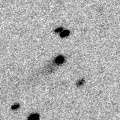
|
Now it is 17.0 mag (Apr. 11, Michael Jager). It stays 18 mag for a while. In the Northern Hemisphere, it stays observable in good condition. In the Southern Hemisphere, it is not observable now, but it will be observable soon.
Date(TT) R.A. (2000) Decl. Delta r Elong. m1 Best Time(A, h)
Nov. 18 12 32.59 12 39.6 9.807 9.263 54 17.6 5:09 (280, 36)
Nov. 25 12 33.15 12 48.3 9.716 9.275 60 17.6 5:14 (286, 43)
|
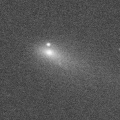
|
It brightened up to 12.8 mag in spring (Mar. 8, Taras Prystavski). Now it is 17.0 mag (Oct. 19, Ken-ichi Kadota). It will fade out rapidly after this. It will be fainter than 18 mag in December. In the Northern Hemisphere, it stays observable in good condition. In the Southern Hemisphere, it will be getting lower gradually.
Date(TT) R.A. (2000) Decl. Delta r Elong. m1 Best Time(A, h)
Nov. 18 0 31.10 -5 22.6 2.164 2.895 129 17.6 20:43 ( 0, 50)
Nov. 25 0 30.23 -4 54.3 2.279 2.931 122 17.9 20:14 ( 0, 50)
|
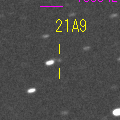
|
Now it is 18.3 mag (Nov. 13, Toshihiko Ikemura, Hirohisa Sato). It stays 18 mag for a while. It stays observable in good condition.
Date(TT) R.A. (2000) Decl. Delta r Elong. m1 Best Time(A, h)
Nov. 18 7 28.94 9 52.3 7.193 7.761 121 17.8 3:44 ( 0, 65)
Nov. 25 7 24.52 9 42.1 7.092 7.760 129 17.8 3:12 ( 0, 65)
|

|
The cometary activity was detected by Masayoshi Yoshimi on Sept. 15. Now it is 16.0 mag (Sept. 15, Masayoshi Yoshimi). It will fade out rapidly after this. It will be fainter than 18 mag soon. In the Northern Hemisphere, it stays observable in good condition. In the Southern Hemisphere, it will never be observable after this.
Date(TT) R.A. (2000) Decl. Delta r Elong. m1 Best Time(A, h)
Nov. 18 23 12.03 66 26.8 0.350 1.191 117 17.8 19:26 (180, 58)
Nov. 25 0 0.02 67 12.8 0.377 1.222 120 17.9 19:47 (180, 58)
|

|
Now it is 18.8 mag (Nov. 14, Toshihiko Ikemura, Hirohisa Sato). It stays 18 mag for a while. It stays observable in good condition.
Date(TT) R.A. (2000) Decl. Delta r Elong. m1 Best Time(A, h)
Nov. 18 4 59.24 24 40.1 3.196 4.133 158 17.8 1:15 ( 0, 80)
Nov. 25 4 54.99 24 23.4 3.166 4.133 166 17.8 0:43 ( 0, 79)
|

|
Tiny member of Comet C/1988 A1 ( Liller )'s group. Now it is 17.4 mag (Nov. 6, Catalina Sky Survey). It will fade out rapidly after this. In the Northern Hemisphere, it will be getting lower gradually. It stays extremely low in the Southern Hemisphere.
Date(TT) R.A. (2000) Decl. Delta r Elong. m1 Best Time(A, h)
Nov. 18 20 3.72 16 33.9 0.405 0.973 75 18.4 18:20 ( 66, 56)
Nov. 25 19 29.23 21 57.2 0.542 0.917 66 18.8 18:18 ( 85, 48)
|
|
![]()
 C/2023 E1 ( ATLAS )
C/2023 E1 ( ATLAS ) C/2021 Y1 ( ATLAS )
C/2021 Y1 ( ATLAS ) (3200) Phaethon
(3200) Phaethon C/2014 UN271 ( Bernardinelli-Bernstein )
C/2014 UN271 ( Bernardinelli-Bernstein ) 199P/Shoemaker 4
199P/Shoemaker 4 C/2022 S4 ( Lemmon )
C/2022 S4 ( Lemmon ) C/2022 A3 ( Lemmon-ATLAS )
C/2022 A3 ( Lemmon-ATLAS ) 237P/LINEAR
237P/LINEAR C/2022 E3 ( ZTF )
C/2022 E3 ( ZTF ) C/2023 S3 ( Lemmon )
C/2023 S3 ( Lemmon ) 207P/NEAT
207P/NEAT 117P/Helin-Roman-Alu 1
117P/Helin-Roman-Alu 1 C/2022 V2 ( Lemmon )
C/2022 V2 ( Lemmon ) C/2022 QE78 ( ATLAS )
C/2022 QE78 ( ATLAS ) C/2021 S4 ( Tsuchinshan )
C/2021 S4 ( Tsuchinshan ) C/2020 Y2 ( ATLAS )
C/2020 Y2 ( ATLAS ) C/2022 N2 ( PanSTARRS )
C/2022 N2 ( PanSTARRS ) C/2019 E3 ( ATLAS )
C/2019 E3 ( ATLAS ) C/2020 S4 ( PanSTARRS )
C/2020 S4 ( PanSTARRS ) C/2022 U3 ( Bok )
C/2022 U3 ( Bok ) C/2023 C2 ( ATLAS )
C/2023 C2 ( ATLAS ) 170P/Christensen
170P/Christensen 13P/Olbers
13P/Olbers 65P/Gunn
65P/Gunn C/2022 R6 ( PanSTARRS )
C/2022 R6 ( PanSTARRS ) C/2022 U1 ( Leonard )
C/2022 U1 ( Leonard ) P/2023 M4 ( ATLAS )
P/2023 M4 ( ATLAS ) P/2001 Q6 ( NEAT )
P/2001 Q6 ( NEAT ) C/2020 F2 ( ATLAS )
C/2020 F2 ( ATLAS ) 71P/Clark
71P/Clark C/2021 A9 ( PanSTARRS )
C/2021 A9 ( PanSTARRS ) 2019 AV4
2019 AV4 404P/2020 M6 ( Bressi )
404P/2020 M6 ( Bressi ) C/2023 V5 ( Leonard )
C/2023 V5 ( Leonard )![]()
























































